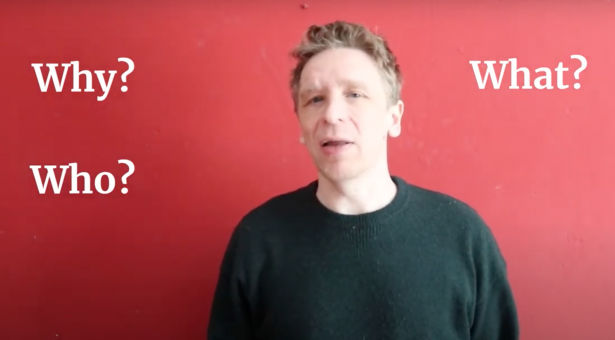How to give a successful talk; Part 1 – Prepare

Public speaking is something all scientists will need to do at some point in their career.
However, for some people this opportunity to share the thing you are passionate about and probably know more than anyone else about, is something to dread and endure, rather than enjoy. It doesn’t have to be this way.
We asked our resident public speaking expert James Piercy what tips he would give somebody ahead of a talk.
“When you write a talk it is really important to first spend some time thinking about why you’re doing it, what you want to say and who you’ll be saying it to.
Doing so will make both writing the presentation and delivering it on the day much easier. You want your presentation to be successful, so ensure that you invest a little time asking yourself these questions before you put pen to paper;
Why are you giving the talk?
There are lots of possible reasons why you might be asked to give a talk, or volunteer yourself to deliver one, so before you start writing, narrow down what your aim is; what do you want to achieve?
Are you trying to raise awareness, change behaviour, ask a question or just earn yourself free dinner?
Being clear about what you hope the outcome will be before you plan what to say, will help you focus what you say, in order to achieve what you set out to.
Who are you talking to?
Who will the audience be and what assumptions can you make about them, for example what level of background knowledge do they have on the subject?
Knowing something about your audience is crucial to pitching your talk at the right level, omitting stuff that your audience will already know and focussing on the new, interesting stuff you can tell them.
If you have been asked to speak at an unfamiliar event ask the organisers some questions to help establish who they are and what they might want from you. How many people? What age are they? What do they already know?
What is your take home message?
In a 20 minute talk you will probably only have time to make two or three points, so work out what these need to be, bearing in mind what you set out to achieve and who you’re talking to.
Once you have narrowed down the main points you want your audience to take away with them, you can structure your talk around making those points, and supporting them.
When you write your talk think about a beginning, middle and end. How do you introduce the topic, how do explain the process or idea you are exploring? Will you finish by returning to your first point or are you ending on a call to action? Can you find a narrative to lead the audience through your argument?
Never give a presentation without asking yourself these three vital questions at the very beginning.”
